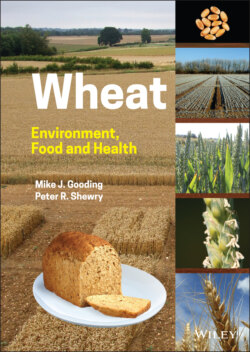Читать книгу Wheat - Peter R. Shewry - Страница 42
1.5.4.2 Gluten and Health
ОглавлениеThe most widely known and the most well‐characterised adverse reaction to wheat consumption is coeliac disease (CD). CD has been recognised since ancient Greek times; the first modern description was given by the British paediatrician Samuel Gee in 1887. Gee also adopted the classical Greek name from koiliakós, meaning abdominal. However, the link to wheat was not made until the 1940s by Willem Karel Dicke, a Dutch scientist. The link with gluten was established by 1952. CD is an autoimmune response which results in damage to the small intestine. This leads to several symptoms, notably malabsorption of nutrients and diarrhoea. It is triggered in genetically susceptible individuals by the ingestion of wheat gluten or related proteins from barley or rye. The aetiology of CD is well understood and there is no cure except avoidance of the proteins responsible for triggering the response. It is estimated to affect about 1% of the global population but may exceed this in some countries. Small proportions of coeliac patients may also suffer from dermatitis herpatiformis or neurological symptoms (including ataxia).
True allergy to the ingestion of wheat (or gluten proteins) is relatively rare. However, there is greater concern about a loosely defined group of symptoms known as non‐coeliac gluten sensitivity or non‐coeliac wheat sensitivity, which has been reported to affect between 0.5 and 10% of the population. This condition is still poorly understood but current work suggests that the prevalence may be higher than that of CD, with proteins other than gluten responsible for triggering the response. These conditions are discussed in detail in Chapter 9 (see also Brouns et al. 2019).
There is no doubt that concerns about adverse effects on health, propagated particularly in the social and popular media, have affected the consumption of wheat in some counties. However, they must be considered in perspective and not allowed to overshadow the health benefits from wheat consumption or the degree of global food security based on increasing wheat production (Lillywhite and Sarrouy 2014; Peña et al. 2017).
